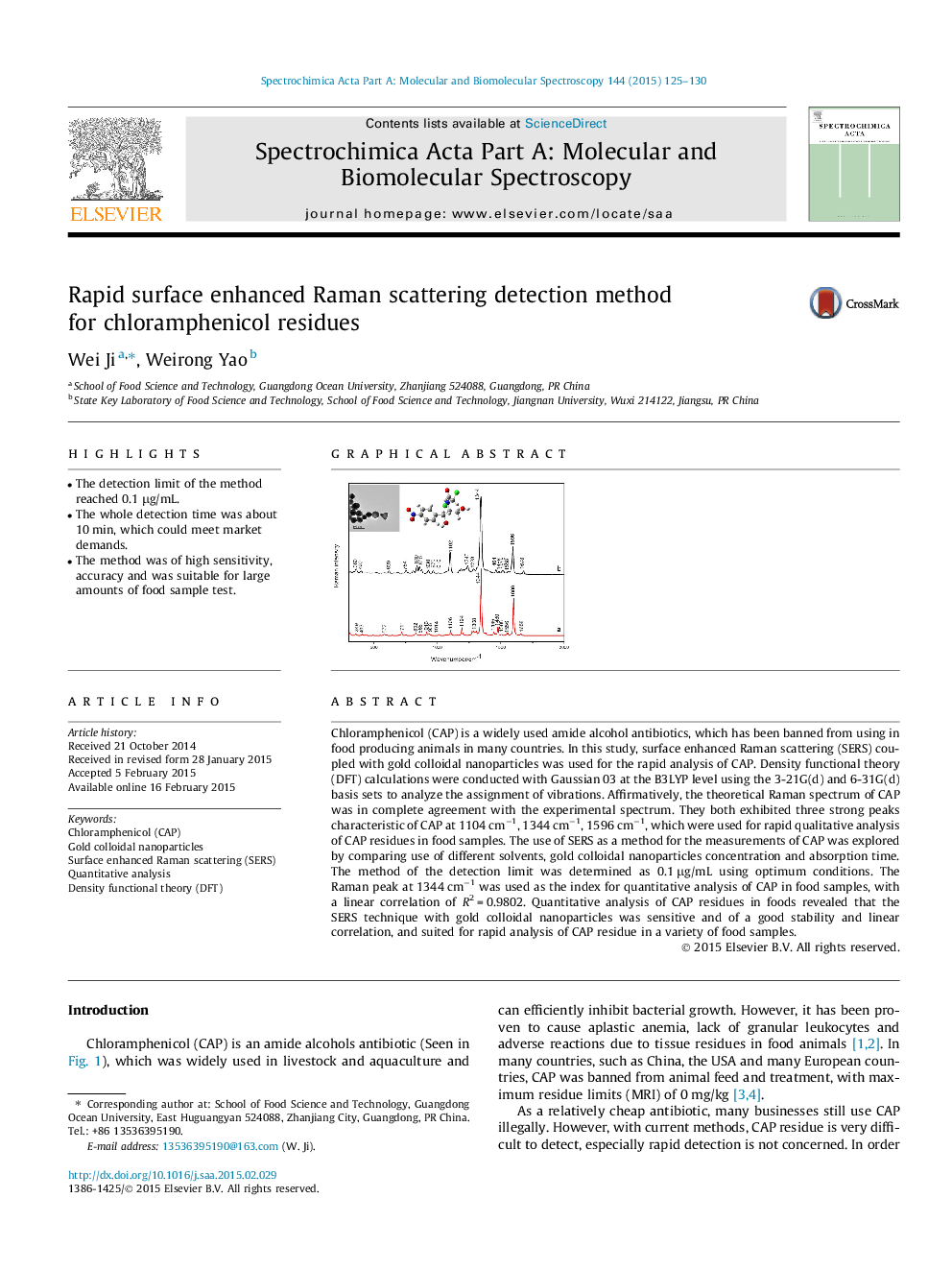| Article ID | Journal | Published Year | Pages | File Type |
|---|---|---|---|---|
| 1228885 | Spectrochimica Acta Part A: Molecular and Biomolecular Spectroscopy | 2015 | 6 Pages |
•The detection limit of the method reached 0.1 μg/mL.•The whole detection time was about 10 min, which could meet market demands.•The method was of high sensitivity, accuracy and was suitable for large amounts of food sample test.
Chloramphenicol (CAP) is a widely used amide alcohol antibiotics, which has been banned from using in food producing animals in many countries. In this study, surface enhanced Raman scattering (SERS) coupled with gold colloidal nanoparticles was used for the rapid analysis of CAP. Density functional theory (DFT) calculations were conducted with Gaussian 03 at the B3LYP level using the 3-21G(d) and 6-31G(d) basis sets to analyze the assignment of vibrations. Affirmatively, the theoretical Raman spectrum of CAP was in complete agreement with the experimental spectrum. They both exhibited three strong peaks characteristic of CAP at 1104 cm−1, 1344 cm−1, 1596 cm−1, which were used for rapid qualitative analysis of CAP residues in food samples. The use of SERS as a method for the measurements of CAP was explored by comparing use of different solvents, gold colloidal nanoparticles concentration and absorption time. The method of the detection limit was determined as 0.1 μg/mL using optimum conditions. The Raman peak at 1344 cm−1 was used as the index for quantitative analysis of CAP in food samples, with a linear correlation of R2 = 0.9802. Quantitative analysis of CAP residues in foods revealed that the SERS technique with gold colloidal nanoparticles was sensitive and of a good stability and linear correlation, and suited for rapid analysis of CAP residue in a variety of food samples.
Graphical abstractFigure optionsDownload full-size imageDownload as PowerPoint slide
